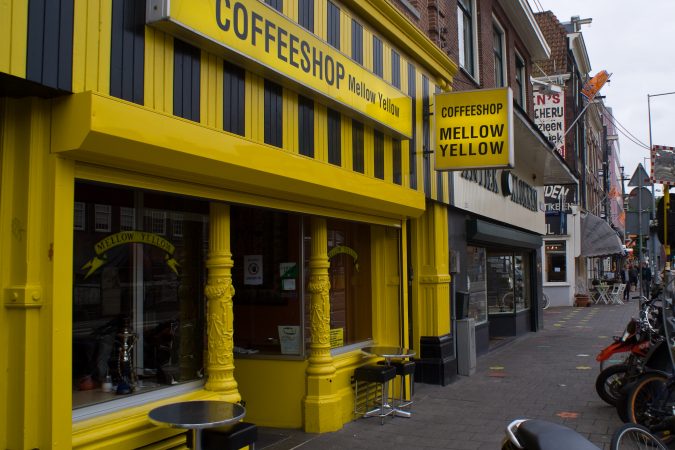Written by Jonas Guigonnat
The Tale of the Old King and the Dandy
The world around us is unlike anything it ever was. Changes operate permanently, even on a microscopic scale, technocrats transform mass-politics into digi-democracies and most of the western world asks itself what its identity really is.
Not that long ago the democratic world-view was claiming a victory on history.
Divisions between folks, ideologies, cultures, nations and continents were meant to make place for the last step of human modernity toward world unity. History was to show us how progress works toward its (democratic) accomplishment.
The past seemed – for a while – tangible, real and existent on its own. What we were told from above was the truth. Facts were facts, we heard, there was thus apparently no reason to doubt our version of the world and its history.
Those ideas came from old king Europe, who had, for a short historic while, the world in the grasp of his hand.
He once believed in being at the center of the universe. Every bit of wealth, knowledge and kingdom had to belong to him. When he discovered the West Indies – a little more than 5 centuries ago – he transformed the place into his own private garden and called it the Americas.
But this old king had a bad habit: turning his own children, who considered themselves lands, against each other in a fight to the death.
Some of them, who were sent to the American garden to be its guardians, had enough of this game, refused to obey and rebelled against their father. They discovered, far away from him, on that other continent, the possibilities of becoming an entity of its own – independent.
This new independent country had to be funded on values that were subversive to the old king, almost to the point of arrogance. Otherwise, they would have been destroyed by the one they were facing.
The conflict that followed was to be of legendary proportions, the old king trying to annihilate the rebels, who were developing and strengthening their new identity in the heart of the battle. As a result of that war, out of the ashes, rose the American Dandy.
Almost a century and a half later, some of his other children, fighting to divide the colonized world between each other, ultimately brought destruction to the old king – a conflict he ultimately lost after the whole world settled its score with him twice in half a century.
Without being the only or real winner coming out of the two world conflicts, the American Dandy was far stronger than the dying king, but willing to negotiate the new world order with what remained of him.
The young American Dandy was using norms and values familiar to the surviving children, they were easy enough to be understood by all. Those values were also to be universal and true for all humans, in the name of progress.
Let’s just doubt the idea that this progressive version of history really is the root of our chaotic present.

Photo by Gui Avelar
Stepping Out of the Fairytale
Human memory is the filter transforming the complicated soup of what lies behind us into a meaningful past. Collective memories are ones of political motivations and institutional signature. What we are told is thus nothing more than… what we are told.
It is then possible to see the last 70 years as something else than as a race to peace and unity. This race makes sense in a specific discourse: the American version of the democratic world-view, which did win many conflicts in the twentieth century to bring peace to the whole world. But every process, as far as the past is concerned, fluctuates and eventually changes into something different than what it was.
The transatlantic network wasn’t just a question of ideals.
With Stalin and Russia, as the biggest winners, taking all of the Balkan countries for himself, on the east side of the European continent, the clock was ticking. Some in Western Europe, out of the ruins of their country, saw the choice between a transatlantic world and a Soviet one as a devil’s choice.
Leaping Back In
But the Dandy had an ally in that choice: the dusty old British lord.
The British lord was, from the start, a part of the European family. But he liked to believe that he was different from the rest, an island thing as they say. At the end of World War II, he got that right in a way, and may have been the only one not really on the losers side in Western Europe. He was weakened and it paid.
Though he distrusted everyone and believed for a long time that he was meant to rule the world, he accepted the proposition made by Dandy – who was once his son, now considered a retarded nephew – while knowing he had to lose his colonies in other continents to close the deal.
With the British on his side, the Dandy thought it was just a question of time before the stubborn old king would give up his defense and accept his rule.
But in an unexpected turn of events, two of the king’s children, the French general and the almost totally destroyed German warlord, were creating a back-stop that was meant to diminish the dependence of West-Europe toward any foreign force in the future. The old French general was hoping to keep his colonies, and the vanquished German to avoid the same humiliation he experienced when signing at Versailles in 1919.
Old king Europe had to transform himself to survive and, making his way up between the Dandy and the Russians, he became at first an economic force to be internationally considered. But this new Europe wasn’t to play an important political role again just yet.
The ball was rolling in unexpected ways.
Shake Off the Tale
After two decades of struggle against too much influence from any party, and the refusal of decolonizing countries in Africa and Asia, the new Europe had, at the end of the 1960s, to pick a side. As an isolated rebel continent, it could not have stood against the forces at play.
The voice of the British neighborhood was still clearer to hear. They were asking for collaboration with the Americans. A compromise was the only option, and it was clear the old continent wasn’t going to take a dominant position in the negotiation. The dispute for the main vision of Europe was just starting.
It comes finally to one crucial decision: how centralized to make the politico-economic Europe.
To France, where centralization is the core of politics, it couldn’t be centralized enough. For the British it was the opposite, states had to maintain full sovereignty and use a political Europe mostly to keep peace and trades stable. Regulations were to be imposed only if necessary. Two visions still dividing the monopole of today’s European Union.
The dispute continued in the 70s and 80s, with new mythical figures like the conservative Margaret Thatcher on the British side (known as the Iron Lady for her toughness), the French socialist, François Mitterrand, and the German liberal, Helmut Kohl, coming on stage.
The moves that were made were tactical, each party realizing that hasty decisions could put the fragile collaboration in danger.
But then, a wall fell down.
The political balance inside of the European project itself, was to be shaken as a consequence of that falling wall, and some processes to be accelerated. The discussion about centralization took a new turn, as all of Eastern Europe, that was now free of the Soviet rule, was potentially to
“participate” in the project.
For the ones fond of centralized powers, it was clear that nothing could be done without strong political structures. European norms, values, and thus rules, had to be broadly accepted in order to receive an entrance ticket. The structures that had to ensure that this process went well could only be legitimately anchored in strong treaties and regulations.
A strong center of power in Europe was needed more than ever.
But the balance of power was also to in doubt. Germany became a whole country once again, reuniting east and west, but the implication were complex. The war that ended four decades earlier was still fresh in collective and individual memories. A strong Germany didn’t sound like a bright idea, knowing “what happened last time.”
Maybe also for that reason, even more power was given to the center of this symbiotic entity that was called the European Union. At its center was a French-speaking city located in Belgium: Bruxelles. The back-up place had to be in Strasburg, a French city which has been alternately German and French since the war between both countries in 1871. Compromise was thus made, in a way.
France emerged as one of the “rightful” founding fathers of the European project, and, without a doubt, was the most powerful, historically, politically, and economically. Therefore, he was also the most legitimized one to supervise the whole affair. Margaret Thatcher accepted on behalf of the United Kingdom (anything but too strong a Germany).

Photo by Jaime Casap
Towards an Ever Closer Union
Few things were refused by the British, like the Euro as a unique currency; the Iron Lady gave in on many points. The ball seemed to stop rolling and the traditional dispute about Europe to fade away. But this was just for a little while.
After a short period of happily ever after, between 1993 and 2001, the international atmosphere changed radically following the events on September 11, 2001. Wars were to be started again (mostly in the Middle-East) and the idea of the foreigner as an enemy came back into our daily lives.
Aside from the fear of terrorism, social problems were developing due to the enlargement of the European Union. Without frontiers, the continent was full of better opportunities for those living in countries trying to reconstruct themselves after almost 50 years of Soviet rule.
Some countries were more popular than others, as much for those running from conflicts in the Middle-East, as for the East-Europeans eager to make something new out of their lives. But Great Britain, and England in particular, was the Eldorado (as the “Jungle of Calais” shows us France would not be). Desperate souls from all horizons wanted to reach the new promised land.
The traditional reservations of Great Britain toward the centralized European project were, in this context, easy to revive. It is already clear where that ultimately brings us to.
Brexit is the End of a Long Tale
The reasons discussed above (among many others) may have contributed to the British voting for Brexit. Looking for the roots of this rocking event, one may stumble on the complexity of all kinds of processes, many of which aren’t always clear to us. What will happen is even less possible to answer – even a month before it happens.
Time will give its answer, laughing at us, as usual, when revealing the new reality emerging out of panic and chaos.











